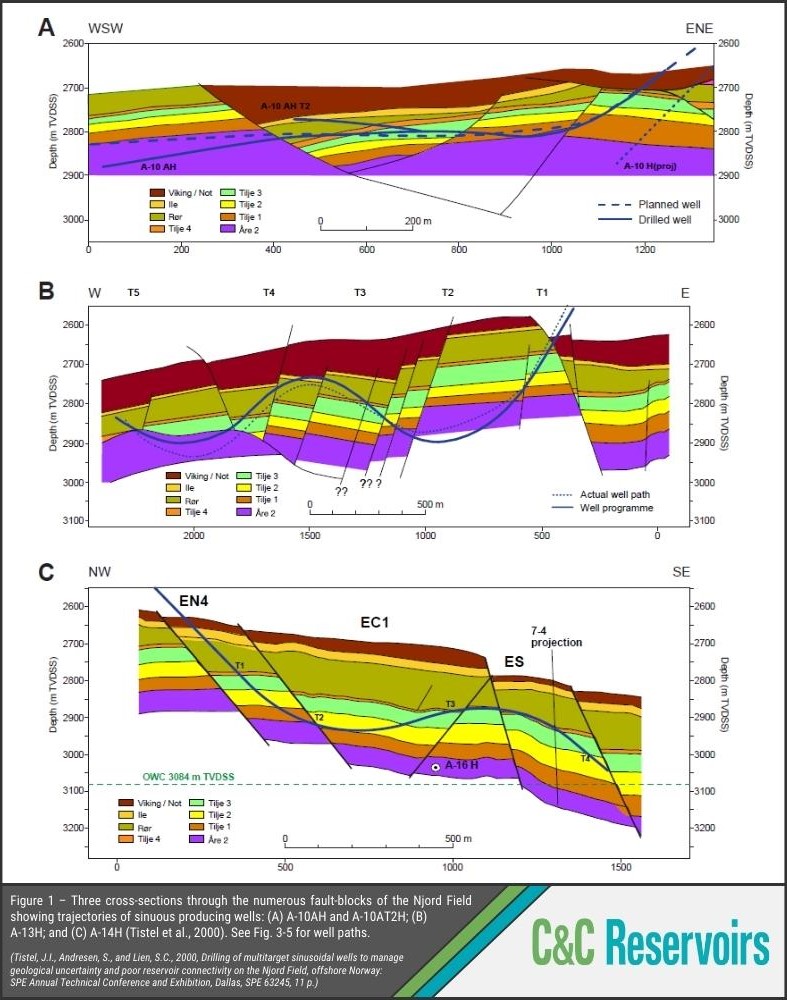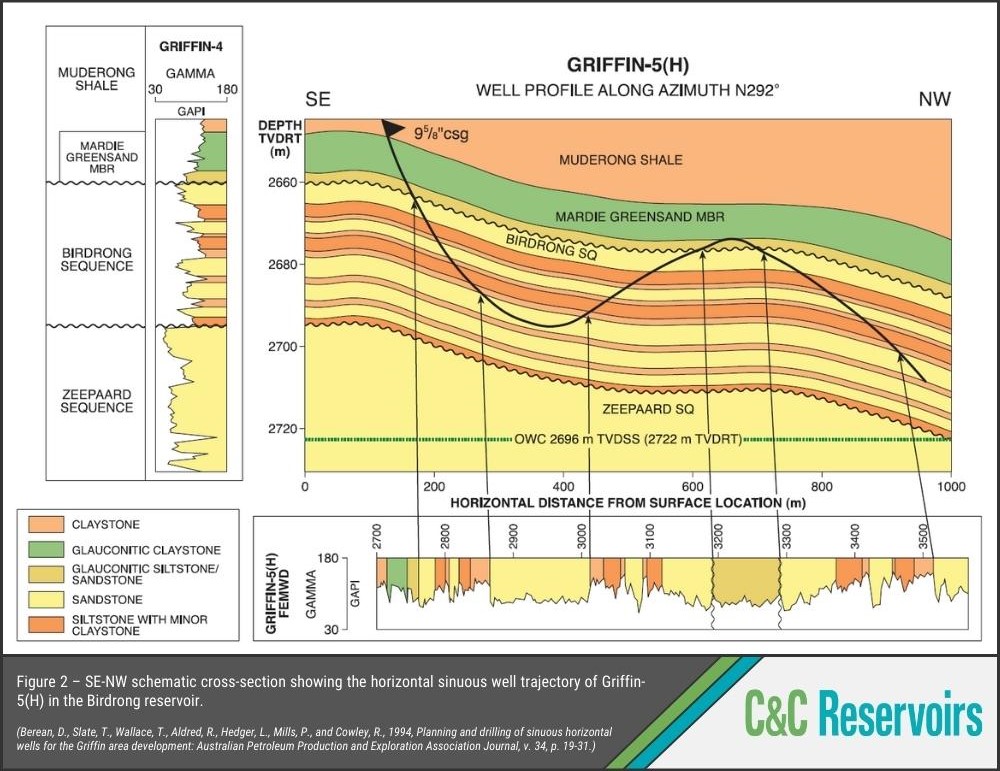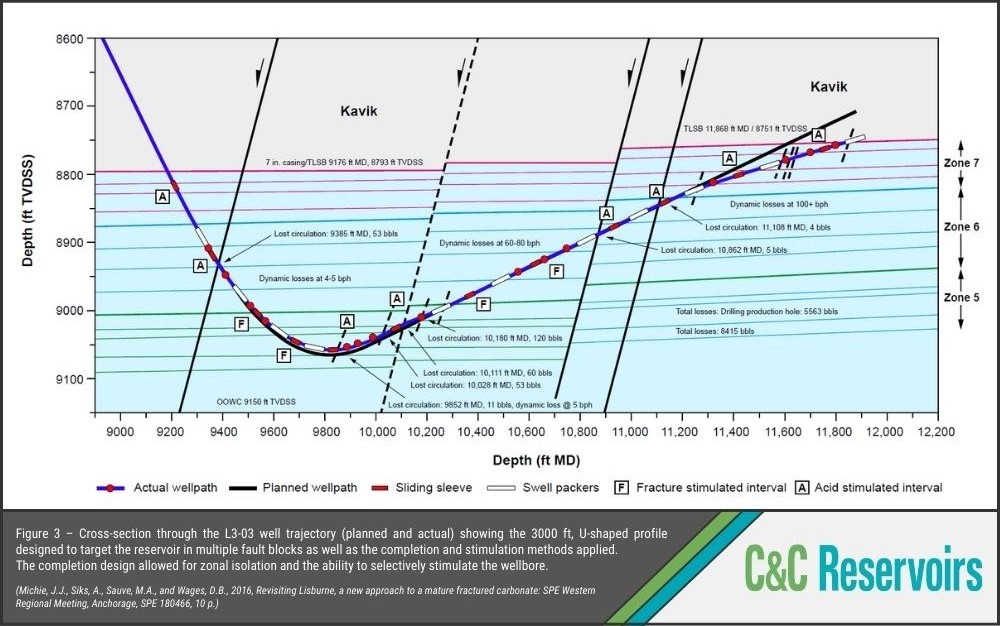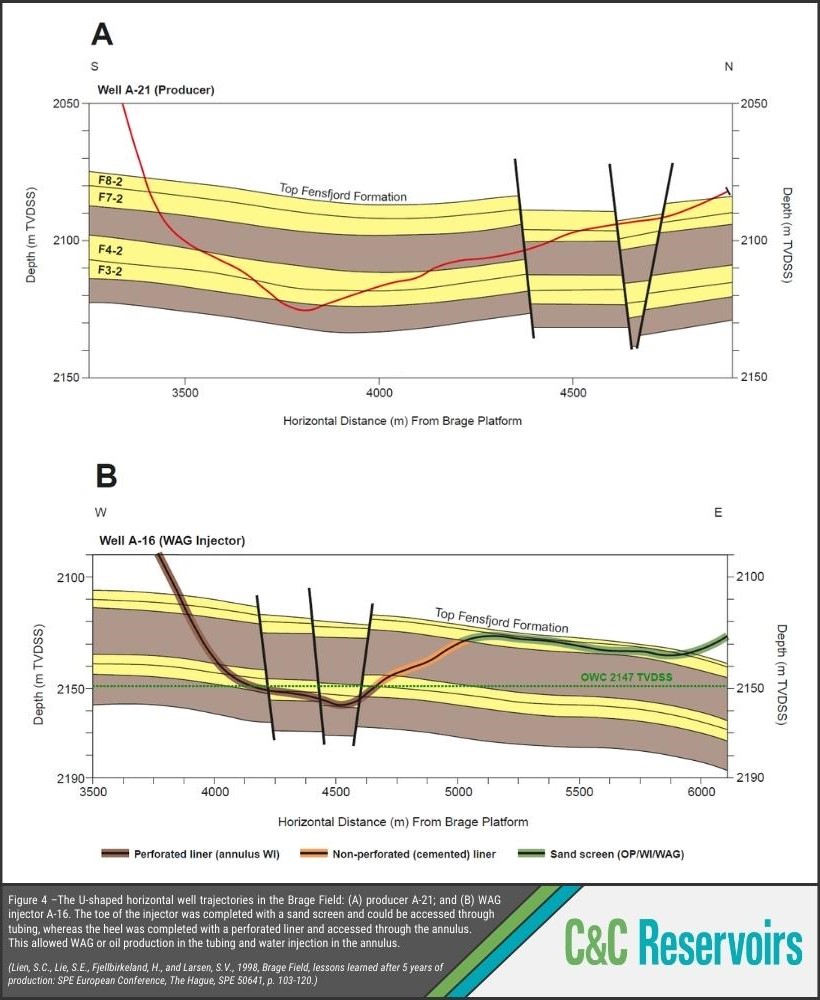Directional Drilling Analogues
This week’s Analogue Spotlight focuses on directional drilling. Since the first horizontal well was drilled in the 1920’s the accuracy of directional drilling has greatly improved. Technological advances have provided the industry with multiple solutions to drilling challenges and as a result more complex wells can be used to increase production.
Here are four global oil and gas analogues that provide perfect case studies on innovative uses of directional drilling.
◾️ In the Njord Field (Norway) wells were drilled with U-, S- and W-shaped trajectories to access as many fault compartments and reservoir zones as possible after poor production from early conventional wells (Figure 1).
◾️ The Birdrong Formation in the Griffin Field (Australia) was developed using two sinuous horizontal wells that make multiple traverses up and down through the section to maximize access to oil-saturated layers in the poorly connected reservoir (Figure 2).
◾️ In the Lisburne Field (Alaska) two infill wells were drilled as U-shaped horizontals placed above the OWC and designed to cross-cut multiple small-scale faults along the wellbore to access fracture permeability (Figure 3).
◾️ U-shaped horizontal well trajectories were drilled for both producer and injector (Figure 4) to ensure penetration of all oil-bearing layers in the Brage field (Norway).




